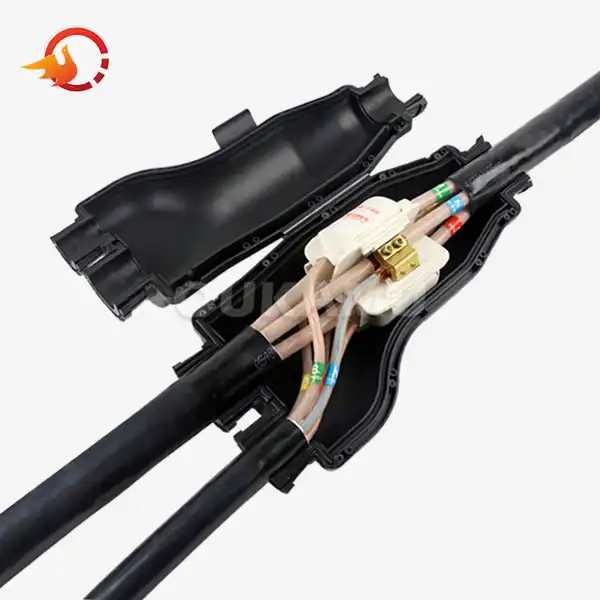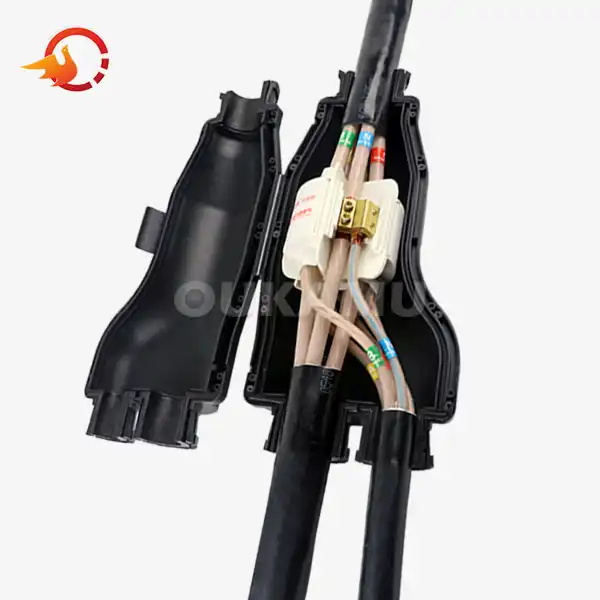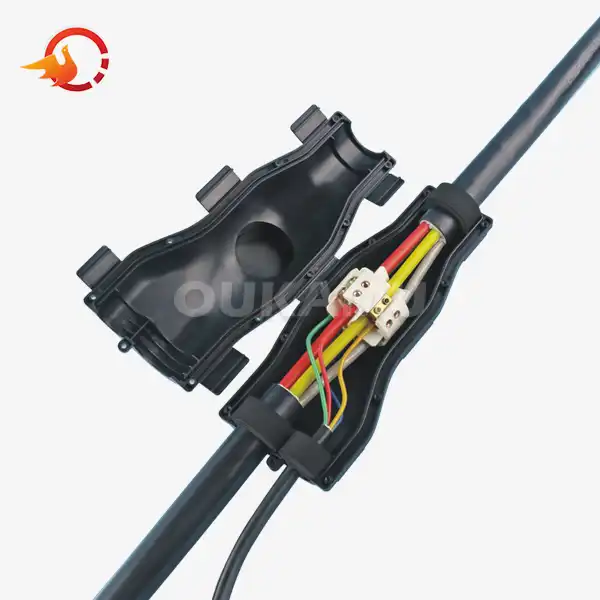What is the most common fault in underground cables?
 2025-09-01 11:30:31
View:389
2025-09-01 11:30:31
View:389Underground cables play a crucial role in our modern electrical infrastructure, providing reliable power distribution while maintaining a cleaner aesthetic compared to overhead lines. However, these hidden lifelines are not without their challenges. Understanding the most common faults in underground cables is essential for maintaining a robust and efficient electrical system. In this comprehensive guide, we'll explore the primary causes of underground cable faults, detection methods, and preventive measures to ensure optimal performance.
Top Causes of Faults in Underground Cables
While underground cables offer numerous advantages, they are susceptible to various types of faults. Let's delve into the most prevalent issues:
Insulation Breakdown
The most common fault in underground cables is insulation breakdown. This occurs when the protective layer surrounding the conductor deteriorates, leading to electrical leakage or short circuits. Factors contributing to insulation breakdown include:
- Aging: Over time, the insulation material degrades due to thermal stress and environmental factors.
- Moisture ingress: Water penetration can compromise the insulation's integrity, especially in areas with high groundwater levels.
- Mechanical damage: Excavation work or soil movement can cause physical harm to the cable's insulation.
- Electrical stress: Voltage surges or prolonged overloading can weaken the insulation material.
Joint Failures
Cable joints are critical connection points in underground systems. OUKAMU, a leading provider of cable connection solutions, emphasizes the importance of proper jointing techniques. Common joint-related faults include:
- Poor workmanship: Improper installation can lead to weak connections and eventual failure.
- Thermal cycling: Repeated heating and cooling can cause joint materials to degrade or separate.
- Moisture penetration: Inadequate sealing can allow water to enter the joint, causing corrosion and electrical faults.
External Damage
Despite being underground, cables are not immune to external forces. Some common causes of external damage include:
- Accidental dig-ins: Construction or excavation work can accidentally sever or damage cables.
- Rodent attacks: Some animals may chew through cable insulation, causing shorts or open circuits.
- Ground movement: Soil shifts, particularly in areas prone to seismic activity, can strain or break cables.
Thermal Overload
Excessive current flow can cause cables to overheat, leading to:
- Accelerated aging of insulation materials
- Expansion and contraction of conductors, potentially weakening joints
- In extreme cases, melting of the conductor or surrounding materials
How to Detect Issues in Underground Cable Systems?
Identifying faults in underground cables can be challenging due to their hidden nature. However, several techniques and technologies are available for effective detection:
Visual Inspection
While limited in scope for underground systems, visual checks can still provide valuable information:
- Inspect above-ground terminations and connection points for signs of damage or overheating
- Look for ground depressions or unusual vegetation growth that might indicate underground issues
- Check manholes and access points for signs of water ingress or cable damage
Electrical Testing
Various electrical tests can help identify and locate faults:
- Insulation resistance testing: Measures the resistance between conductors and ground to detect insulation degradation
- Time Domain Reflectometry (TDR): Sends electrical pulses through the cable to pinpoint fault locations based on reflected signals
- Partial Discharge (PD) testing: Detects small electrical discharges within insulation, indicating potential weak points
- Tan Delta testing: Assesses the overall condition of cable insulation by measuring dielectric losses
Thermal Imaging
Infrared cameras can be used to detect hotspots in accessible parts of the cable system, such as:
- Termination points
- Above-ground junction boxes
- Transformer connections
Acoustic and Electromagnetic Detection
These methods are particularly useful for pinpointing the exact location of faults:
- Acoustic detection: Listens for the sound of electrical discharges at fault points
- Electromagnetic detection: Uses sensors to locate electromagnetic emissions from fault locations
Preventive Measures for Reliable Underground Cables
Preventing faults is always preferable to dealing with failures. Here are some key strategies to maintain the integrity of underground cable systems:
Quality Installation
Proper installation is crucial for long-term reliability:
- Use high-quality cables and accessories from reputable manufacturers like OUKAMU
- Ensure proper handling and laying techniques to avoid mechanical stress
- Implement correct jointing and termination procedures
- Conduct thorough testing post-installation to verify system integrity
Regular Maintenance and Inspection
Proactive maintenance can catch issues before they become major problems:
- Schedule periodic visual inspections of accessible components
- Perform regular electrical testing to track insulation health
- Use predictive maintenance techniques like partial discharge monitoring
- Keep detailed records of maintenance activities and test results
Environmental Protection
Shielding cables from environmental stressors can significantly extend their lifespan:
- Use appropriate backfill materials to provide mechanical protection and thermal stability
- Install cable ducts or conduits in areas prone to ground movement or water ingress
- Implement proper drainage systems to prevent water accumulation around cables
- Consider cathodic protection in areas with corrosive soil conditions
Load Management
Preventing thermal overload is essential for cable longevity:
- Implement smart grid technologies for better load distribution
- Use dynamic rating systems to optimize cable capacity utilization
- Consider parallel cable installations for high-load areas
Advanced Cable Technologies
Investing in modern cable solutions can provide enhanced reliability:
- Use XLPE (cross-linked polyethylene) insulation for better thermal and electrical properties
- Consider fiber-optic temperature sensing for real-time monitoring of cable temperature profiles
- Explore self-healing cable technologies that can automatically repair minor insulation damage
Workforce Training
Ensuring that personnel are well-trained in cable installation, maintenance, and fault detection is crucial:
- Provide regular training sessions on best practices and new technologies
- Encourage certification programs for cable jointers and technicians
- Foster a culture of continuous learning and improvement in cable management
Documentation and Asset Management
Maintaining comprehensive records can aid in preventive maintenance and quick fault resolution:
- Keep detailed cable route maps and installation records
- Implement a robust asset management system to track cable age, maintenance history, and performance data
- Use GIS (Geographic Information System) technology for accurate cable location and data management
Collaboration with Stakeholders
Preventing cable damage requires coordination with various parties:
- Engage with local authorities and construction companies to prevent accidental dig-ins
- Participate in "Call Before You Dig" programs to mark underground cable locations
- Collaborate with equipment manufacturers like OUKAMU to stay updated on the latest cable protection technologies
Conclusion
Understanding and addressing the most common faults in underground cables is essential for maintaining a reliable and efficient electrical distribution system. By implementing a comprehensive approach that includes quality installation, regular maintenance, advanced detection methods, and preventive measures, utilities and facility managers can significantly reduce the incidence of cable faults and their associated costs.
As technology continues to evolve, solutions like OUKAMU's innovative cable branch connectors offer new possibilities for enhancing the reliability and flexibility of underground cable systems. These advancements, combined with best practices in cable management, pave the way for more robust and resilient electrical infrastructure. For more information on cutting-edge cable connection solutions and how they can benefit your underground cable systems, don't hesitate to reach out to OUKAMU at info@okmbranchcable.com.
FAQ
Q1: How long do underground cables typically last?
A1: The lifespan of underground cables can vary significantly depending on factors such as installation quality, environmental conditions, and maintenance practices. On average, well-maintained underground cables can last 30-50 years.
Q2: Are underground cables more reliable than overhead lines?
A2: Generally, underground cables are less susceptible to weather-related outages and physical damage from falling trees or vehicles. However, when faults do occur, they can be more challenging and time-consuming to locate and repair.
Q3: How often should underground cables be inspected?
A3: The frequency of inspections depends on various factors, including the age of the cable, its criticality, and environmental conditions. As a general rule, comprehensive inspections should be conducted every 3-5 years, with more frequent visual checks of accessible components.
Q4: Can OUKAMU's cable branch connectors be used in existing underground systems?
A4: Yes, OUKAMU's innovative cable branch connectors are designed for both new installations and retrofitting existing underground cable systems, offering improved flexibility and ease of maintenance.
Q5: What are the advantages of using XLPE insulation in underground cables?
A5: XLPE (cross-linked polyethylene) insulation offers several benefits, including higher temperature resistance, improved electrical properties, and longer service life compared to traditional insulation materials.
References
1. Smith, J. (2021). "Underground Cable Fault Analysis and Prevention Techniques." IEEE Transactions on Power Delivery, 36(4), 2234-2245.
2. Johnson, A. et al. (2020). "Advances in Underground Cable Condition Monitoring." Electric Power Systems Research, 185, 106368.
3. Brown, R. (2019). "Life Cycle Management of Underground Power Cables." International Journal of Electrical Power & Energy Systems, 113, 448-456.
4. Davis, M. (2022). "Smart Grid Technologies for Underground Distribution Networks." Energy Policy, 160, 112678.
5. Wang, L. and Zhang, Y. (2018). "Thermal Analysis and Lifetime Prediction of Underground Power Cables." Applied Thermal Engineering, 134, 560-569.















